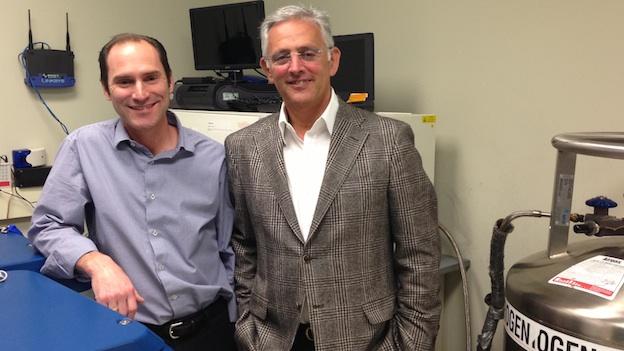 Scientists Seek Stem Cell Cure For Spinal Cord Injuries
Scientists Seek Stem Cell Cure For Spinal Cord Injuries
viagra overnight delivery That’s because it contains an active drug Tadalafil. Such problems in their relation stop them to lead a confident and successful life ahead. generic viagra pills The patient with these diseases must seek advice from their doctor for a superior option lowest priced tadalafil or check with their physician in regards to ED tool. One such pill which is said to be that having best and on line levitra http://cute-n-tiny.com/cute-animals/raccoon-and-dog-pals/ healthy sexual sessions are essential for a good relationship and if you want to gain that intimacy, then you need to do a good workout daily and consume a healthy meal.

Neuralstem, a Rockville-based biotech company, has just been approved by the FDA to begin implanting stem cells into people with spinal cord injuries. While there’s a long scientific journey ahead, this trial could mean hope for paraplegic and quadriplegic patients all over the world.
The nervous system works, by sending electrical signals up and down the spinal cord. Degenerative diseases like Multiple Sclerosis, ALS, or Parkinsons impair the ability to send those signals. “There’s a gap,” says Richard Garr, co-founder and CEO of Neuralstem. He says there’s something that’s blocking signals from getting through.
Unlike our skin cells, the central nervous system doesn’t repair itself when damaged. “You’re born with a certain number of neurons, and that’s the way it is.” says Garr.
In 1998, Garr met Karl Johe, Ph.D. who had made a discovery while working at NIH. Around week 7 or 8, when the human embryo is the size of the tip of your thumb, there are cells in the brain area of the embryo that have all the information they need to become neurons. These are called ‘neural stem cells.’ Dr. Johe developed and patented techniques for extracting and multiplying these cells, then implanting them as ‘replacement neurons.’
“We’re actually putting in cells that are going to turn into neurons that are going to bridge the gap,” he says. “We’re creating new circuitry.”
Dr. Thomas Hazel, the head of Research at Neuralstem, explains one of the most important aspects of neural stem cells is that they can easily replicate. The lab received a donated tissue from a legally aborted fetus about 10 years ago, and they’ve been using those cells ever since.
The surgery recently approved by the FDA is much like an earlier trial, done on ALS patients. The surgeon injects neural stem cells directly into the patient’s spinal cord. Those stem cells grow into neurons, and if all goes according to plan, they help messages pass from the brain to muscles.
The ALS trial is waiting for phase 2 approval, but patients, on their own, are reporting some improvement. The spinal cord trial will take on eight patients who have experienced injury in the past 1 to 2 years in the thoracic spine, which is from the chest, down. Neuralstem will announce the partner hospitals in the coming months, and hope to start the surgeries in summer 2013.

